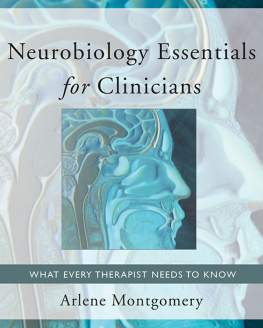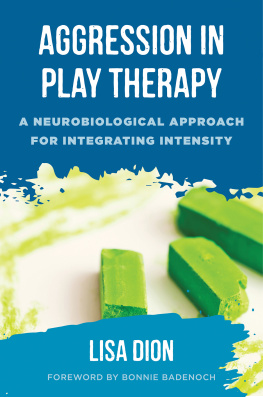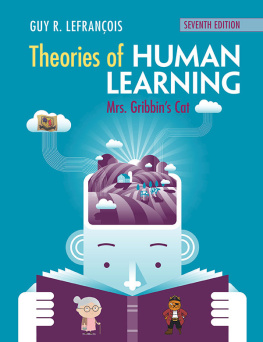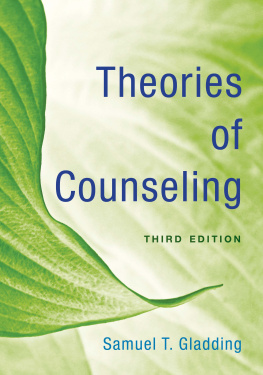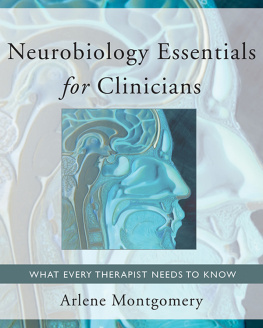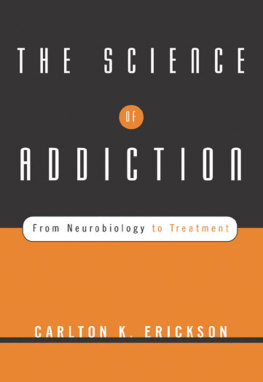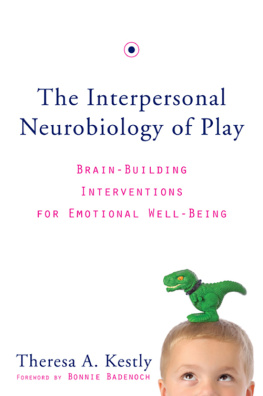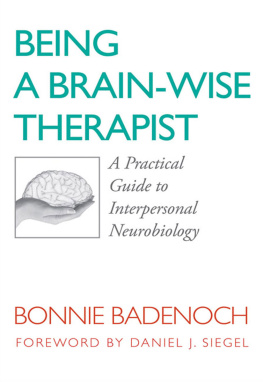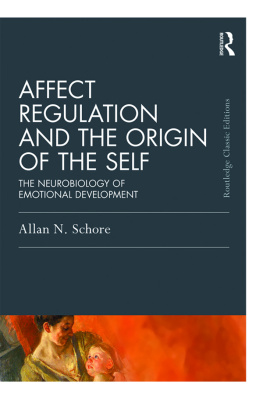
Neurobiology Essentials
for Clinicians
What Every Therapist Needs to Know
Arlene Montgomery
Foreword by Allan N. Schore

In Neurobiology Essentials , Montgomery displays her gift for making extremely complex concepts clear and accessible. Her extensive use of case material makes for a compelling read and explicates otherwise inscrutable neurobiological processes; she guides her reader through moment to moment interactions with clients, elucidating the neurobiological underpinnings of theories and interventions along the way. The result is a contemporary, innovative, research-based framework for clinical practice that will be the go-to neurobiological text for practitioners and students alike. This is an impressively scholarly work that makes a neurobiological perspective human.
Susan Bliss, Ph.D., L.C.S.W., Assistant Professor, Molloy College
The Norton Series on Interpersonal Neurobiology
Allan N. Shore, PhD, Series Editor
Daniel J. Siegel, MD, Founding Editor
The field of mental health is in a tremendously exciting period of growth and conceptual reorganization. Independent findings from a variety of scientific endeavors are converging in an interdisciplinary view of the mind and mental well-being. An interpersonal neurobiology of human development enables us to understand that the structure and function of the mind and brain are shaped by experiences, especially those involving emotional relationships.
The Norton Series on Interpersonal Neurobiology provides cutting-edge, multidisciplinary views that further our understanding of the complex neurobiology of the human mind. By drawing on a wide range of traditionally independent fields of researchsuch as neurobiology, genetics, memory, attachment, complex systems, anthropology, and evolutionary psychologythese texts offer mental health professionals a review and synthesis of scientific findings often inaccessible to clinicians. The books advance our understanding of human experience by finding the unity of knowledge, or consilience, that emerges with the translation of findings from numerous domains of study into a common language and conceptual framework. The series integrates the best of modern science with the healing art of psychotherapy.
To my husband, Seth H. Montgomery .
Thank you. Really .
Contents
PART I
Foundational Neuroscience Concepts
PART II
Special Populations and Topics
F or a number of years I have been scouring the planet for potential authors for the Norton Series on Interpersonal Neurobiology. Many of these authors have well-established international reputations as scholars and renowned clinicians, but an equal number of others are new voices in the field. These extremely curious, dedicated individuals have, through their own intensive study, mastered both a large body of interdisciplinary scientific knowledge and a broad and deep range of clinical experience.
Arlene Montgomery is a prime example of a new, exciting voice. For well over a decade, this gifted clinician-academic has been teaching interpersonal neurobiology to students at the University of Texas at Austins School of Social Work, and continually attracting overflow classes. Over the years the course has been grounded in my first book, Affect Regulation and the Origin of the Self , no easy read for first- and second-year graduate students who are just entering the profession. These students are challenged by her course to absorb large amounts of clinical knowledge and to gain an understanding of the relevance of neuroscience to their emerging psychotherapeutic skills.
Montgomerys extraordinary talent as a master teacher and skilled psychodynamic psychotherapist is expressed in her creative use in the classroom of personally relevant, day-to-day and, indeed, moment-to-moment subjective bodily-based emotional experiences that lie at the core of her students conscious and unconscious worlds. Her teaching style thus encourages more than the accumulation of a large body of explicit knowledge about the connections between psychology and biologyit also calls for an inwardly focused reflective function, one that attends to the students implicit processes. To demonstrate the ubiquity of these hidden nonconscious and nonverbal brain/mind/body processes, she also utilizes an interpersonal neurobiological perspective to analyze the images the culture is generating, (for example, by having the class attend to rapid facial, prosodic, and gestural right-brain communications in highly affective scenes from popular films).
In the following pages Montgomery organizes, synthesizes, and integrates her extensive academic knowledge and clinical skills in order to offer a coherent, well-researched, theoretically based, and clinically relevant volume on neurobiology essentials for clinicians. Although the volume provides a valuable text for the training of mental heath professionals across a wide spectrum of disciplines (social work, psychology, counseling, psychiatry, and psychoanalysis), each chapter breaks new ground in providing fresh and creative interpersonal neurobiological models of a number of complex clinical problems, which advanced clinicians will find provocative and stimulating.
The reader will note that, although Montgomery cites a large number of neuroscientific and clinical authors, she utilizes the perspective of regulation theory to organize both her neurobiological and clinical data. At the very beginning of my most recent volume, in this same IN Series, I stated that regulation theory is offered as a systematic exposition of the general principle of a science. Specifically, it is a formulation of an explanatory conception of the process of development, as it moves along the life span. Thus regulation theory, including its developmental variant, modern attachment theory, serves as a source of testable hypotheses for scientific research, but also as a potential source of more complex and efficient models of clinical intervention.
The opening chapters in the first half of the book (Foundational Neuroscience Concepts) build upon and expand regulation theorys modeling of a number of well-known yet enigmatic clinical phenomena. Utilizing an interpersonal neurobiological lens, Montgomerys curious and synthetic mind focuses upon a number of essential developmental brain/mind/body processes that appear in the therapeutic alliance: the re-expression of right-lateralized autonomic components of the attachment system in heightened affective moments, the role of the right amygdala in unconscious subcortical threat processing, the arousal-regulating functions of a variety of defense mechanisms, and the communication of conscious and unconscious affects via projective identification. In the latter section of the book, regulation theory is used to generate novel interpersonal neurobiological understandings of personality disorders, the adolescent brain, group work, and supervision. Let me provide a glimpse of the upcoming chapters, and speak more to the point of where this book breaks new ground.
Among clinicians of all schools there is currently an intense interest in not only brain but also body. The key to understanding bodily processes is the neural control of bodily processes by the autonomic nervous system (ANS). The nonconscious regulation of bodily-based autonomic arousal is a central aspect of the early developing emotion-communicating attachment mechanism. Indeed this is a central theme of Chapter 1, which overviews the functions of both the right brain and its deep connections to the ANS, and then describes the clinical expressions of this mechanism in a transcript of a psychotherapy session. The author boldly asserts, Tracking psychophysiological arousal can be a very valuable assessment exercise leading to diagnosis and intervention considerations.... This repetitive experience of synchronizing appropriate arousal management strategies with the brain of another has the potential to actually change brain functioning for the better. It is often forgotten that affects have two dimensions, valence (positivenegative, pleasantunpleasant, approachavoidance of discrete emotions) and arousal (intensity, energy, calmexcited). My sense is that clinicians have focused too much on the former, which has impacted clinical models. But arousalespecially somatic, peripheral, autonomic arousalis what is essentially transmitted and regulated in a relational context, and in this book it gets the attention it deserves.
Next page
